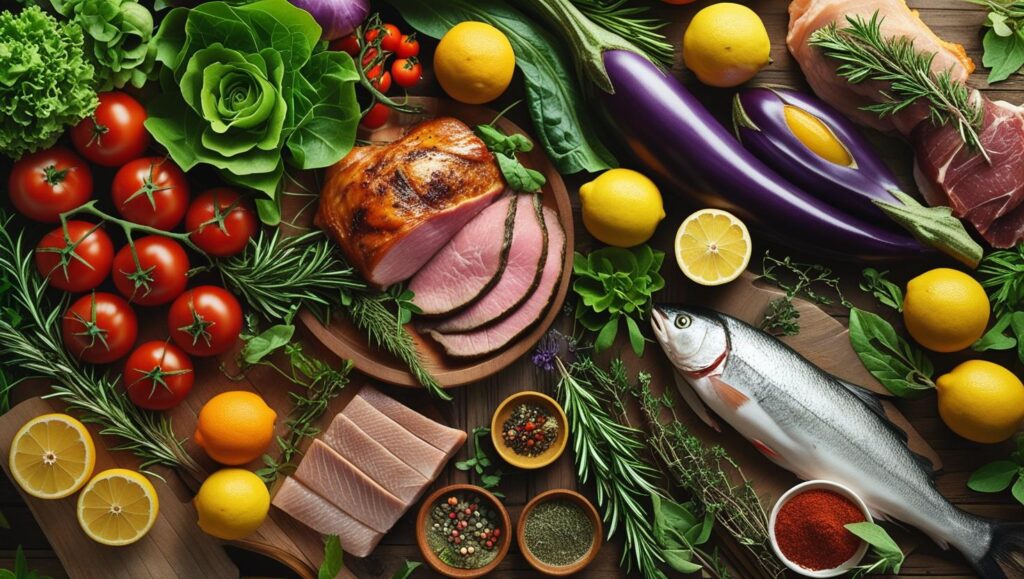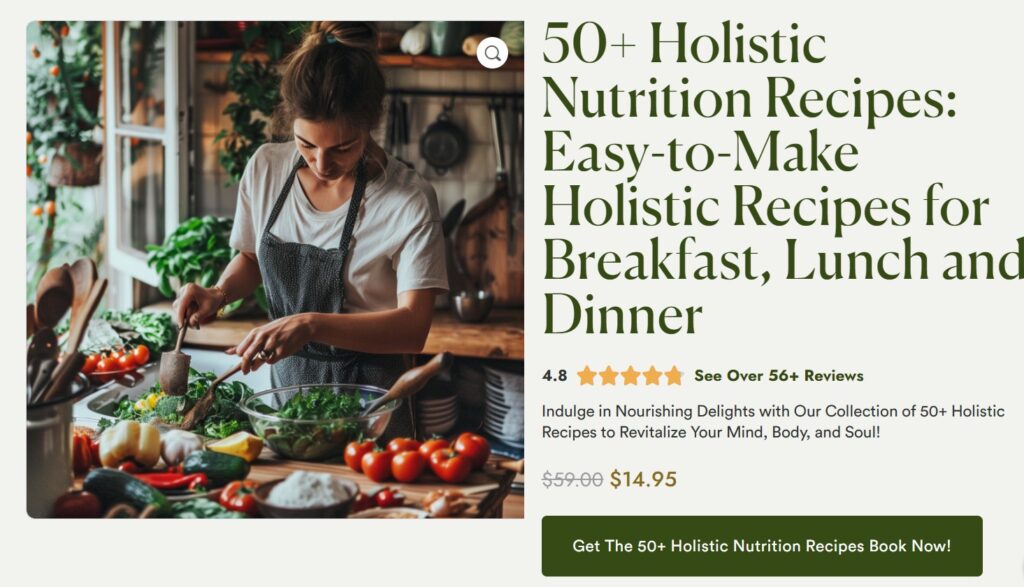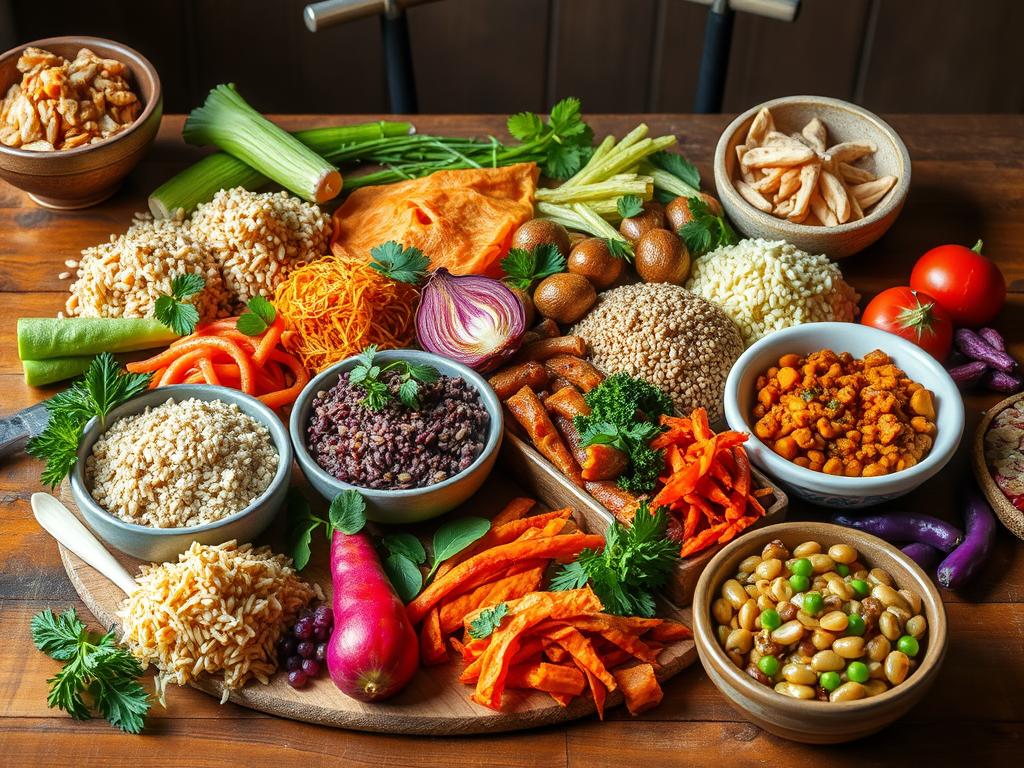Ever wonder why your great-grandmother lived to 95 without counting calories or taking supplements? The answer might lie in the power of ancestral recipes for health – time-tested foods that nourished generations before processed meals took over our plates.
Our ancestors thrived on whole, nutrient-dense foods that modern science is just beginning to understand. While we’ve gained convenience, we’ve lost the profound wisdom of traditional eating patterns that supported optimal health for thousands of years.
This post refers to products from one or more of our advertisers. We may receive compensation if you click on the links to those products. View our Advertising Policy for more info.
Why Ancestral Recipes for Health Matter More Than Ever
The Modern Health Crisis
Today’s standard American diet has led to skyrocketing rates of:
- Heart disease and diabetes
- Chronic inflammation
- Digestive disorders
- Autoimmune conditions
- Mental health challenges
Meanwhile, our ancestors thrived on whole, unprocessed foods like organ meats, bone broth, and fermented vegetables that supported robust health and longevity.

What Makes Ancestral Foods Different
Traditional eating focuses on:
- Whole, unprocessed ingredients from nature
- Nutrient-dense foods with maximum vitamins and minerals
- Traditional preparation methods that enhance digestibility
- Seasonal, local sourcing for optimal freshness
- Sustainable practices that work with natural cycles
The Science Behind Ancestral Nutrition
Key Health Benefits of Ancestral Eating
Nutrient-Density: The Weston A. Price Foundation reports that traditional diets provided “at least four times the water-soluble vitamins, calcium and other minerals, and at least TEN times the fat-soluble vitamins, from animal foods such as butter, fish eggs.” Multiple sources confirm Price’s findings that traditional diets provided “400% more water-soluble vitamins like C, various B vitamins, along with calcium and other minerals” and “1000% more fat-soluble vitamins from animal foods.” This nutritional superiority came from eating whole foods in their natural state, without processing or chemical additives.
Weight Management: Nutrient-dense ancestral foods naturally regulate appetite and support healthy weight maintenance without calorie counting.
Stable Energy: Foods with low glycemic impact provide steady energy without blood sugar spikes and crashes.
Better Digestion: According to a 2021 Stanford Medicine study, traditional preparation methods like fermentation enhance nutrient absorption and support gut health. “Eating foods such as yogurt, kefir, fermented cottage cheese, kimchi and other fermented vegetables, vegetable brine drinks, and kombucha tea led to an increase in overall microbial diversity, with stronger effects from larger servings.”
Reduced Inflammation: Whole foods rich in antioxidants and healthy fats naturally combat chronic inflammation.

Essential Elements of Ancestral Recipes for Health
1. Quality Animal Products
- Grass-fed meats for optimal omega-3 ratios
- Wild-caught fish rich in essential fatty acids
- Pasture-raised eggs with superior nutrition
- Raw dairy (where legal) for probiotics and complete proteins
2. Fermented Foods
The benefit of using salt brine is that the vegetables ferment and create rich, unique flavors and adding healthy probiotics, vitamins, and enzymes to your diet. Traditional cultures relied heavily on fermentation for food preservation and enhanced nutrition.
Traditional sourdough bread, made with wild yeast cultures and long fermentation times, represents one of humanity’s oldest methods of making grains more digestible and nutritious – a stark contrast to today’s commercial yeasts and quick-rise breads. Learn to make your own sourdough bread and more with this free online course.

3. Bone Broth and Organ Meats
Bone broth contains a number of minerals and nutrients that are good for our bodies. Collagen, for example, is an important protein found in animal bones. This article from Cleveland Clinic states that while further research is needed to confirm bone broth’s health benefits, its nutritional makeup suggests a wide range of possibilities such as improved gut health, less joint pain, stronger bones and muscles, stress reduction, and healthier skin. A fine broth can be made from a handful of bones. Place your bones and meat scraps in a pot, cover with water, add sea salt and a splash of an acid, either vinegar, wine or lemon juice to draw the minerals from the bones.
4. Ancient Grains and Sprouted Foods
Traditional preparation methods like soaking, sprouting, and fermenting grains increase nutrient availability and reduce anti-nutrients.
Authentic Ancestral Recipes to Start Your Journey
Traditional Bone Broth (Makes 8-10 cups)
Ingredients:
- 2-3 lbs grass-fed beef bones (or chicken/turkey bones)
- 2 tablespoons apple cider vinegar
- 1 onion, roughly chopped
- 2 carrots, roughly chopped
- 2 celery stalks, roughly chopped
- 2 bay leaves
- 1 tablespoon sea salt
- 12-16 cups filtered water
Instructions:
- Place bones in a slow cooker or large pot
- Add vinegar and let sit for 30 minutes to draw out minerals
- Add vegetables, salt, and cover with water
- Cook on low for 12-24 hours (slow cooker) or simmer gently on stovetop
- Strain and cool; refrigerate up to 5 days or freeze for later use
Source: Traditional European cooking methods
Lacto-Fermented Sauerkraut (Makes 1 quart)
Ingredients:
- 2 lbs fresh cabbage, finely shredded
- 1 tablespoon sea salt (non-iodized)
- 1 teaspoon caraway seeds (optional)
Instructions:
- Mix shredded cabbage with salt in a large bowl
- Massage and squeeze cabbage until it releases liquid (10-15 minutes)
- Pack tightly into a clean glass jar, leaving 1-2 inches headspace
- Press down until brine covers cabbage completely
- Weigh down with a clean stone or glass weight
- Cover with cloth and secure with rubber band
- Ferment at room temperature for 1-4 weeks, tasting weekly
- Refrigerate when desired sourness is reached
Source: Traditional German fermentation techniques
Ancestral Morning Porridge (Serves 4)
Ingredients:
- 1 cup steel-cut oats (soaked overnight)
- 2 cups filtered water
- 1 cup whole milk or coconut milk
- 2 tablespoons butter or coconut oil
- 1 tablespoon raw honey
- 1/2 teaspoon cinnamon
- Pinch of sea salt
- Fresh berries and nuts for topping
Instructions:
- Drain and rinse soaked oats
- Bring water to boil, add oats and salt
- Simmer 20-30 minutes, stirring occasionally
- Add milk, butter, honey, and cinnamon
- Cook 5 more minutes until creamy
- Top with seasonal fruits and nuts
Source: Traditional Scottish and Irish breakfast preparations
Wild-Caught Salmon with Herbs (Serves 4)
Ingredients:
- 1.5 lbs wild salmon fillet
- 2 tablespoons olive oil or coconut oil
- 2 cloves garlic, minced
- 1 lemon, sliced
- Fresh dill and parsley
- Sea salt and black pepper
- Seasonal vegetables for roasting
Instructions:
- Preheat oven to 400°F
- Place salmon on parchment-lined baking sheet
- Brush with oil, season with salt and pepper
- Top with garlic, herbs, and lemon slices
- Surround with seasonal vegetables tossed in oil
- Bake 12-15 minutes until fish flakes easily
Source: Traditional Scandinavian cooking methods
Your 7-Day Ancestral Eating Action Plan
Week 1: Foundation Building
Day 1-2: Start bone broth – begin your first batch and incorporate into meals
Day 3-4: Eliminate processed foods and focus on whole ingredients
Day 5-7: Begin simple fermentation project (sauerkraut or pickled vegetables)
Daily Meal Structure
Breakfast: Nutrient-dense smoothie with healthy fats, or ancestral porridge
Lunch: Wild-caught fish or grass-fed meat with fermented vegetables
Dinner: Bone broth-based soup or stew with seasonal vegetables
Snacks: Nuts, seeds, or small portions of fermented foods
Practical Tips for Modern Ancestral Living
Shopping Smart
- Find local farmers: Build relationships with local producers for quality ingredients
- Seasonal eating: Align your meals with what’s naturally available
- Quality over quantity: Invest in grass-fed, wild-caught, and organic when possible
- Bulk buying: Purchase bones, ancient grains, and nuts in bulk to save money
Kitchen Setup
- Fermentation vessels: Invest in quality glass jars for fermenting
- Slow cooker: Essential for easy bone broth making
- Sharp knives: Proper tools make vegetable preparation enjoyable
- Storage containers: Glass containers for storing prepared foods
Meal Prep Strategies
- Batch cooking: Prepare large quantities of broth, fermented foods, and cooked grains
- Freezer-friendly: Most ancestral recipes freeze well for quick meals
- Simple swaps: Replace processed snacks with nuts, seeds, and fermented vegetables
Overcoming Common Challenges
“It Takes Too Much Time”
Start with one ancestral recipe per week. Bone broth cooks itself in a slow cooker, and fermented vegetables require just 15 minutes of prep time.
“It’s Too Expensive”
Focus on affordable staples like eggs, seasonal vegetables, and buying bones from local butchers (often very inexpensive).
“My Family Won’t Eat It”
Begin with familiar foods prepared traditionally – like homemade chicken soup with bone broth instead of store-bought stock.
“I Don’t Know Where to Start”
Choose one recipe from this guide and master it before adding more. Small, consistent changes create lasting habits.
Building Your Ancestral Recipe Collection
Essential Cookbooks and Resources
- “Nourishing Traditions” by Sally Fallon
- “The Ancestral Table” by Russ Crandall
- Holistic Nutrition Recipes (affiliate link)

Online Communities
- Join fermentation groups for troubleshooting and inspiration
- Follow ancestral health bloggers and practitioners
- Connect with local traditional foods chapters
The Bigger Picture: Ancestral Recipes for Health and Sustainability
Choosing ancestral recipes for health isn’t just about personal wellness – it’s about supporting:
- Regenerative agriculture that heals the soil
- Local food systems that strengthen communities
- Traditional knowledge that connects us to our heritage
- Environmental sustainability through reduced processing and packaging

Moving Forward with Confidence
Remember, adopting ancestral recipes for health is a journey, not a destination. Our ancestors didn’t achieve perfect health overnight, and neither will you. Focus on progress, not perfection.
Start with one simple change this week – perhaps making your first batch of bone broth or trying a fermented vegetable. Each small step connects you more deeply with the wisdom of traditional eating while supporting your modern health goals.
The path back to ancestral health is really a path forward to optimal wellness. By honoring the food wisdom of our ancestors, we create a foundation for vibrant health that can last a lifetime.
Your body knows how to thrive on real, whole foods – it’s simply been waiting for you to provide them. Begin today with one ancestral recipe and discover how traditional eating can transform your health from the inside out.
You May Also Like:
Why Do We Love Family Heirloom Recipes? The Sheer Delight of Culinary Traditions
Family Recipe Book Ideas: Are You Old School or Digital?
Life Hacks from the Past: Ancestral Wisdom for Modern Challenges
Sources:
Price, W.A. (1939). Nutrition and Physical Degeneration. Price-Pottenger Nutrition Foundation.
The Weston A. Price Foundation. (2000). “Timeless Principles of Healthy Traditional Diets.”
Wastyk, H.C., et al. (2021). “Gut-microbiota-targeted diets modulate human immune status.” Cell, 184(16), 4137-4153.e14.
Taylor, B.C., et al. (2022). “Fermented Foods, Health and the Gut Microbiome.” Nutrients, 14(7), 1527. PMC9003261.
Valentino, V., et al. (2024). “Fermented foods, their microbiome and its potential in boosting human health.” Microbial Biotechnology, 17(2). PMC10886436.
Various studies on bone broth compiled by Cleveland Clinic, WebMD, and Harvard Nutrition Source (2023-2025).
Weaver, Janelle (2021). “Fermented-food diet increases microbiome diversity, decreases inflammatory proteins, study finds.” Stanford Medicine News Center.
Cleveland Clinic –healthessentials (2024). “Why Bone Broth Is Good for You (and How To Make It).”


